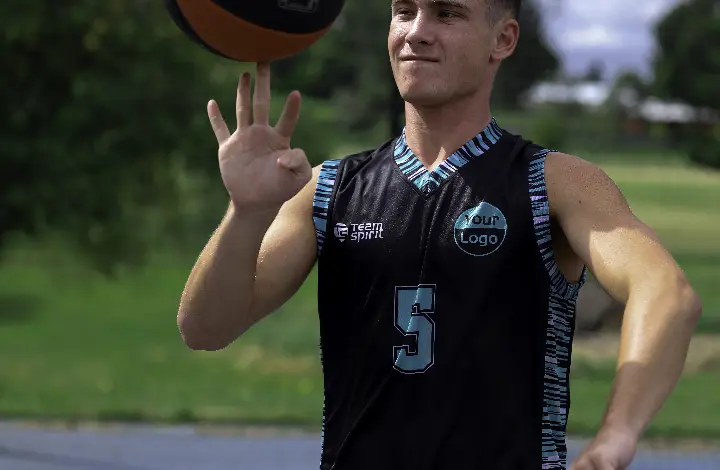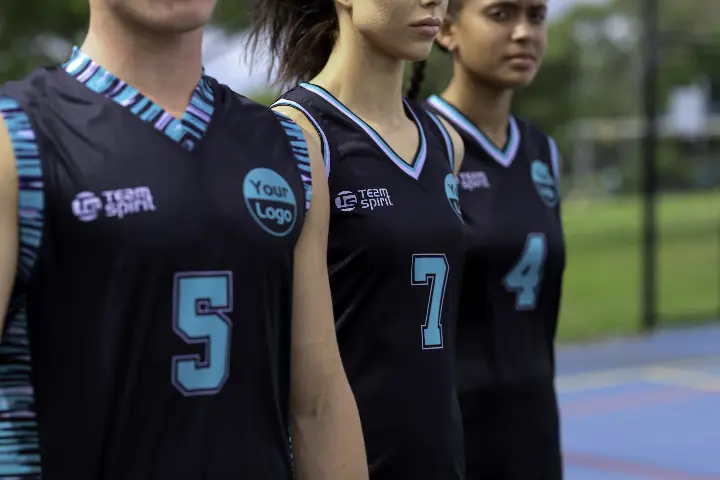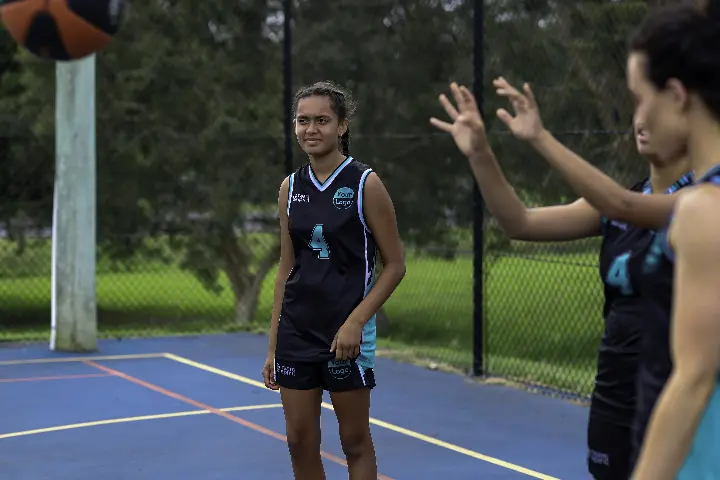When it comes to ordering custom sportswear or team uniforms in Australia, the printing method you choose can make a big difference. From colour vibrancy to cost efficiency and fabric compatibility, understanding how screen printing vs digital printing compare helps ensure your gear looks great, feels comfortable, and lasts through the season.
Both printing options offer unique advantages, but which one is right for your school, club, or event? Whether you're printing jerseys in bulk or looking for detailed one-off designs, this guide breaks down the pros and cons of each method to help you make the right choice for your teamwear.
What is Screen Printing?
Screen printing is a traditional garment printing method that uses stencils (or “screens”) and layers of ink to apply designs to fabric. It’s especially effective for bold, solid-colour graphics and is commonly used in bulk uniform printing.
Because of its ability to deliver consistent, vibrant results, screen printing is often the best print method for clubs ordering large batches of jerseys, polos, and hoodies. It’s reliable, durable, and offers great colour payoff, particularly on cotton or cotton-blend garments.
How the Screen Printing Process Works
The process begins by creating a separate screen for each colour in the design. These screens act like stencils, allowing ink to pass through only in the intended areas. The fabric (like a jersey or polo) is laid flat, and ink is then pushed through the screens layer by layer onto the garment.
Each colour must dry before the next layer is applied. While this makes screen printing more labour-intensive than digital alternatives, it also produces a highly durable result that can withstand heavy wear and washing, which is why it's often chosen for school sports uniforms and club kits.
This method is best suited to flat printing areas, such as the front of jerseys, back of t-shirts, or centre of polos.
Pros of Screen Printing
Screen printing comes with several advantages, especially for teams and organisations ordering in volume:
- Cost-effective for large orders: Once the screens are made, the cost per garment drops significantly.
- Long-lasting and vibrant: The ink sits on top of the fabric, creating bold, solid colours that last through repeated use and washing.
- Ideal for logos and solid colours: Especially when your design has minimal colours or block text.
-
Reliable for teamwear: Jerseys, hoodies, training tops and school polos all hold up well under screen printing.
If you're planning to print the same design across dozens or hundreds of garments, screen printing is a budget-friendly and robust solution.
Cons of Screen Printing
Despite its strengths, screen printing does have limitations:
- Higher setup costs: Every colour requires a separate screen, which increases costs for short runs or personalised designs.
- Limited detail and colour range: Complex gradients, photo-style designs or multi-colour logos are harder (and more expensive) to execute.
- Less effective on technical fabrics: Performance materials like moisture-wicking polyester don't always bond well with traditional screen inks.
-
Slower turnaround: The setup and drying process makes screen printing less ideal for last-minute or fast-delivery needs.
For small clubs needing a handful of shirts with personalised names or detailed logos, digital printing may be the more efficient option.
What is Digital Printing?
Digital printing, also referred to as Direct-to-Garment (DTG) or digital textile printing, is a modern method that uses inkjet technology to apply designs directly onto the fabric. Unlike screen printing, which relies on layered stencils, digital printing transfers your artwork straight from a digital file to the garment, much like a standard office printer but for clothing.

Because there’s no need for physical screens, it’s especially effective for low-quantity orders, personalised gear, and full-colour prints.
How the Digital Printing Process Works
The digital printing process is simple and efficient. Once your design is finalised, it's uploaded into a specialised printing machine, which then prints the image directly onto the garment. The fabric absorbs the ink, locking the design into the fibres.
There’s no setup, no screens, and no extra steps for multi-colour prints. This means faster production, less waste, and far more freedom to experiment with photo-quality digital prints, gradients, and small-run orders.
Because of its flexibility, digital printing is frequently used for custom sportswear printing options, like one-off team shirts, personalised names/numbers, and short-run uniforms.
Pros of Digital Printing
Digital printing offers several advantages, especially for sports clubs, schools, and small teams that need high-quality results without high minimums.
-
Excellent for complex designs: Detailed logos, gradients, and photographs print clearly with rich colour accuracy.
- Fast and flexible: With no setup time or screens to prep, it’s perfect for last-minute orders or personalised pieces.
-
Ideal for small or custom runs: You can print just one item or mix names and numbers without added cost.
-
Fabric-friendly: Works on various materials, including polyester blends and activewear fabrics.
This makes digital printing a go-to for school leavers’ shirts, casual teamwear, or event merch where each piece may differ.
Cons of Digital Printing
Despite its many benefits, digital printing also has a few limitations:
-
Higher per-unit cost for large orders: Without the economies of scale found in screen printing, unit prices remain consistent regardless of volume.
-
Less vibrant on dark fabrics: Light ink sometimes struggles to pop on black or navy garments, although pre-treatment techniques can help.
- Durability varies: The print’s lifespan depends on the fabric and how the garment is washed. Polyester performance fabrics may require special care to maintain print quality.
For heavy-use items like rugby jerseys or gear meant to last multiple seasons, screen printing may still offer better long-term durability.
Screen Printing vs Digital Printing: Side-by-Side Comparison

When choosing between screen printing and digital printing for your custom sportswear, it helps to look at how the two stack up across key factors like setup time, design flexibility, and fabric compatibility. Here's a detailed breakdown:
Setup Time
-
Screen printing requires more setup because each colour in the design needs its own stencil (screen). This process takes time but becomes more efficient at scale.
- In contrast, digital printing has little to no setup, just upload the design file and go. This makes digital the better choice for quick runs or one-off pieces.
Order Quantity
- Screen printing shines in bulk orders. Once the screens are made, the cost per unit drops significantly, making it ideal for schools and clubs needing 50+ pieces.
- Digital printing, however, is better suited to small batch sportswear printing or personalised items, as it doesn’t rely on costly setup.
Detail & Gradients
-
If your design features photographic images, shading, or complex gradients, digital printing is the winner. It offers photo-quality digital prints and handles multiple colours effortlessly.
- Screen printing, while vibrant, is best for bold, solid-colour designs and doesn’t handle intricate details or colour blends as well.
Cost Per Unit
-
For large orders, screen printing is more cost-effective. The setup is expensive, but unit prices drop with volume.
- Digital printing has consistent per-unit pricing, making it better for small or varied orders, especially when using different names, numbers, or artwork per garment.
Turnaround
-
Digital printing offers faster turnaround since there’s no need to prepare screens or layer inks. It’s ideal for urgent or last-minute teamwear jobs.
- Screen printing, due to its setup and drying process, generally takes longer, especially for multi-colour prints.
Fabric Compatibility
-
Screen printing works best on cotton or cotton-blend fabrics and can be tricky on performance materials like mesh or moisture-wicking polyester.
-
Digital printing, especially direct-to-garment (DTG), works well on a wider range, including poly blends and technical fabrics used in modern teamwear.
Durability & Wash Care
-
Screen prints are known for their fade resistance in custom prints, especially on cotton or blended fabrics. They can last through dozens of washes without significant wear, making them a popular choice for school uniforms and sports clubs.
- Digital prints, while sharp and soft to the touch, may fade faster, particularly on dark or synthetic fabrics. Wash care plays a role: cold water, inside-out washing, and avoiding the dryer will help extend the life of digital prints.
Best For
-
Screen printing is best for bulk orders, team logos, and school uniforms with simple designs and limited colours.
-
Digital printing is ideal for short runs, complex artwork, or teams that want unique, detailed customisation without committing to a high volume.
How to Choose the Right Printing Method

Choosing between screen printing and digital printing comes down to four main considerations: design complexity, order size, budget, and fabric type. Here’s how to make the best choice for your needs.
1. Design Complexity
If your artwork includes high-detail graphics, gradients, or multiple colours, digital printing is your best bet. It allows for photographic-quality finishes and full-colour freedom. For simple logos or one- or two-colour designs, screen printing is more than sufficient and often more cost-effective.
2. Order Size
For bulk orders, like a school-wide sports uniform rollout, screen printing is the economical choice. The upfront setup pays off across higher quantities. For low minimum order prints or one-off custom jobs (e.g. name-and-number jerseys), digital printing provides flexibility without setup fees.
3. Budget Considerations
If you're on a tight budget and ordering in volume, screen printing offers better value per unit. However, for small orders where setup costs would outweigh the benefit, digital printing can actually be the smarter financial choice.
4. Fabric Compatibility
As outlined earlier, digital is usually better for synthetic and moisture-wicking fabrics, while screen printing thrives on cotton-rich garments. Match your method to your material for the best results.
Recommendations by Use Case
Schools & PE uniforms:
Go with custom uniforms screen printing, it’s cost-effective, consistent, and long-lasting for larger student groups.
Sporting clubs & rep teams:
Consider a hybrid approach. Use digital printing for sponsor logos or small runs of personalised items, and screen printing for training gear and match kits.
Promotional or event wear:
For short-term or one-time use (fun runs, fundraisers, etc.), digital printing offers quick turnaround and no minimums.
Whichever you choose, working with an experienced teamwear printing Australia supplier, like Team Spirit Sports, ensures your prints are optimised for durability, quality, and value.
Screen Printing vs Digital Printing: Which is Right for Your Teamwear?
Choosing between screen printing and digital printing comes down to your needs, whether it’s bold, long-lasting prints for large team orders or detailed, multi-colour designs for small custom runs. Each method has its place in the world of custom sportswear, especially when it comes to balancing cost, design complexity, fabric, and durability.
If you're outfitting a school, club, or community group in Australia, the best approach is to align your print method with your team’s goals and budget. At Team Spirit Sports, we’re here to help you explore the best options based on your design, fabric, and order size, so you get the result that works best for your team.
Contact us today to speak with our local team and get expert advice for your next custom teamwear project.